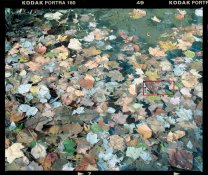grat
Member
So last night, I got to thinking about how much resolution is actually needed to scan film.
On the LF forum, the statement was made that the scanning resolution needs to be high enough to see the film grain, and I'm not sure of the "why" for that statement.
I went looking, and Fuji very helpfully lists the resolving power of their Pro 400H film on their datasheet, and they list it as:
17. RESOLVING POWER
Test-Object Contrast: 1.6:1 ............. 50 lines/mm
Test-Object Contrast: 1000:1 ........125 lines/mm
OK, so high contrast is going to be easier to distinguish, low contrast not as much, that makes sense. Did some hunting around for "what does lp/mm mean in terms of ppi", and got a number of answers, but eventually tracked down an equation, only to discover that you can specify lp/cm as a scanning resolution in SilverFast, and it helpfully can translate to ppi-- and 1250 lp/cm is 3175 ppi, and just inside the "yellow" area on the ppi slider.
So to make a long story into a short question, if Fuji rates their film's resolving power at 125 lp/mm, which apparently translates to 3175 ppi, what's the benefit of scanning at a higher resolution?
On the LF forum, the statement was made that the scanning resolution needs to be high enough to see the film grain, and I'm not sure of the "why" for that statement.
I went looking, and Fuji very helpfully lists the resolving power of their Pro 400H film on their datasheet, and they list it as:
17. RESOLVING POWER
Test-Object Contrast: 1.6:1 ............. 50 lines/mm
Test-Object Contrast: 1000:1 ........125 lines/mm
OK, so high contrast is going to be easier to distinguish, low contrast not as much, that makes sense. Did some hunting around for "what does lp/mm mean in terms of ppi", and got a number of answers, but eventually tracked down an equation, only to discover that you can specify lp/cm as a scanning resolution in SilverFast, and it helpfully can translate to ppi-- and 1250 lp/cm is 3175 ppi, and just inside the "yellow" area on the ppi slider.
So to make a long story into a short question, if Fuji rates their film's resolving power at 125 lp/mm, which apparently translates to 3175 ppi, what's the benefit of scanning at a higher resolution?







